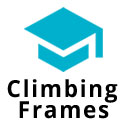ESL Classroom Tools
As a novice or trainee TEFL teacher, you will understandably be eager to utilise your ESL lessons to make classes both enjoyable and educational, all the while walking the fine line between the effectiveness of both. TEFL teachers around the world use a number of techniques, lesson enhancers, games, and multimedia that complement their lessons, aiding in student engagement and learning. Below are some of our favourite tools that belong in any ESL teacher’s arsenal.
Storytelling
Storytelling is perhaps the oldest and most humanly universal means of passing on knowledge, tradition, and history. Before the written language was developed generation upon generation, regardless of culture or creed, educated the next in this fashion… and so will you with your ESL students. While the benefits of storytelling are often seen more with the younger students, anyone can benefit, as both speaking and listening are integral to learning any language.
Here are a few things you may want to keep in mind when selecting a story:
- Will it appeal to all ages?
- Will it appeal to both boys and girls?
- Did you pick it because you personally like it or because you believe it will be integral to your lesson?
- Is the story culturally interesting?
Before incorporating any story into your lessons, it’s important that you the teacher read it first and become familiar with the plot, characters, vocabulary, figurative language, and so on. When reading to your students, limit the session to around about fifteen to twenty minutes and be sure to ask questions such as “what do you think will happen next?” to check for comprehension. Afterwards, be sure to check for understanding amongst the students and answer any questions. Storytelling is a fine line, however, and the novice ESL teacher must remember to not compromise the magic of storytelling by turning it into a grammar lesson!
If you are still stuck on what to choose, most major publishing houses have a range of ESL graded stories, and you can check out Oxford University Press’s selection of graded readers here: https://elt.oup.com/cat/subjects/graded_reading/?cc=gb&selLanguage=en%20.
Flash Cards
Flash cards are another tried and true method of aiding learning that ESL students can benefit immensely from. Flash cards are a great way to quickly learn vocabulary words, and as an ESL teacher you can find and print some online, in an educational supply store, or feel free to create your own. Classified vocabulary is often best presented with pictures on one side of the cards, and the name of the object (person, emotion, occupation, etc) on the other. Students can then work in pairs quizzing each other on vocabulary words by playing with the flash cards. Other applications incude teaching the alphabet, pronunciation, synonyms and antonyms, and numbers.
If you are looking to make your own flashcards, Free Tech 4 Teachers is just one of many sites that allow you to make and print your own: http://www.freetech4teachers.com/2009/07/10-places-to-make-and-find-flashcards.html#.VG9KK4usXRs
Virtual Tours
Virtual tours are a fantastic way of incorporating ESL lessons with a visually fun and engaging form of multimedia, allowing you to take your students on whirlwind trips around the world from the comfort and convenience of the classroom. If you are unsure how to use virtual tours to your teaching advantage, here are a few pointers to help you select the right tour for your lesson:
- Set an ESL learning objective. Though virtual tours can be fun and enjoyable, they need to serve a bigger purpose in the ESL classroom. Set an objective with your lesson plan, and know ahead of time how you will incorporate the virtual tour into that objective. As example, if you are showing a virtual tour of the zoo, have students name the animals they see.
- Make sure the tour is of an appropriate level. Consider your students CEFR level when selecting a tour for your lesson, as you will want to make certain your students have the vocabulary and skill necessary to talk about the tour. For example, naming animals at the zoo is considerably easier than touring a car assembly plant and explaining the manufacturing process!
- Prep before the tour. If you’ve set specific learning objectives, you may want to consider prepping a worksheet for students to complete whilst on the tour. Always talk with your students before the tour to talk about any essential vocabulary they may need.
- Set a time. Virtual tours are fun and effective, but should not take up the entire lesson time. If you are eager to show a particularly long tour, break it up over several lesson plans. You should leave time both before and after the tour for discussions, class work, and checking for understanding.
- Decide where to go! While it should integrate with your lesson, be flexible in your choice, maybe even let your students pick (within reason).
Here are just a few links to London virtual tours:
http://www.visitlondon.com/discover-london/london-virtual-tour
http://www.eyerevolution.co.uk/virtual_tours/tate-modern/%20http://www.google.com/earth/index.html
https://www.google.com/maps/views/streetview?gl=us
The Language Laboratory
The Language Laboratory is a database of English language TV and radio programmes, online programmes and podcasts, and voice recordings used to create an immersive environment that fully exposes students to native English use and pronunciation.
The Language Laboratory is fully modifiable by the ESL teacher in order to fit lessons and specific activities, and it allows all students to both be more actively involved and have more speaking time than in the traditional ESL classroom. Students can use The Language Laboratory to record and playback their own voices, talk to each other or with a teacher, or work through individual speaking exercises. This clearly gives Language Laboratory classrooms much more student speaking time than what is possible within a traditional ESL classroom. What’s more, Language Lab allows for the storing of student recordings and work, making it easier for the ESL teacher to assess individual student progress over time.
Online Games
Integrating games into your lesson plans can be a great way to get the students actively participating while making the lesson fun for everyone. With near endless possibilities, it’s important you pick a game that reinforces your lesson object for that day. Here are a few sits that have online ESL games:
- Vocabulary, grammar, and spelling games that cover all CEFR levels, British English. http://www.english-online.org.uk/games/gamezone2.htm
- Dora’s Alphabet Forest Adventure. An entertaining site for introducing pre school level children to alphabet and phonic basics. http://www.nickjr.co.uk/
- ESL Games World. ESL grammar, spelling, and vocabulary centric games, with both online games and printables for classroom use. Appropriate for all ages http://www.eslgamesworld.com/members/games/index.html
- co.uk. Appropriate for both native speakers and ESL students, this site has games covering elementary to high school age groups. http://www.vocabulary.co.il/english-language-games/
- org. More for adult ESL students and those at or above B2 of the CEFR. http://www.manythings.org/vocabulary/
Always make sure you play a game before playing it with your students. You will want to make sure the game is appropriate for your students’ age and language level, as well as fit in with your lesson objective for the day. Games are fun and exciting for students, so it’s also important to keep in mind you might see some loud or disruptive behaviour during game time.
- The Impacts of Teaching in Africa - December 5, 2022
- Job Searching In The Digital Age: A Guide - September 3, 2022
- Why Golf is one of the Best Ways to Learn English - June 15, 2022
- How to travel smart with medical conditions - April 24, 2022
- 5 Ways TEFL Teachers can Develop New Skills - December 14, 2021
- How to Calculate the Cost of a Postgraduate Degree - April 11, 2021
- Building a career as a TEFL teacher - December 29, 2016
- Learning English through Art - August 31, 2016
- Does Art Have A Place In The Language Learning Classroom? - August 31, 2016
- A Review of the TOEFL Exam - June 22, 2016
















